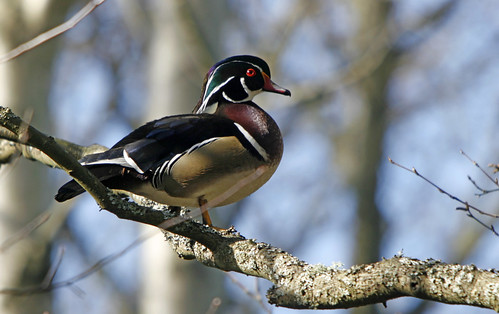
A few nice small sex images I found:
Australian wildlife 0048 Wedge-tailed Eagle

Image by Michael Dawes
Wedge-tailed Eagle
Scientific name: Aquila audax
Family: Accipitridae
Order: Falconiformes
What does it look like?
Description
The Wedge-tailed Eagle has long wings (wingspan 2.3 m), a characteristic long, wedge-shaped tail, and legs that are feathered all the way to the base of the toes. The bill is pale pink to cream, the eye brown to dark brown, and the feet off-white. Young Wedge-tailed Eagles are mid brown in colour with reddish-brown heads and wings. They become progressively blacker for at least the first ten years of their lives; adults are mostly dark blackish-brown. The only difference in plumage between the sexes is that a female adult is generally slightly paler than her mate. Females (4.2 kg - 5.3 kg) are also larger and heavier than males (3.2 kg up to 4.0 kg). Wedge-tailed Eagles are Australia's largest raptors (birds of prey).
Similar species
Australia's second largest eagle (and second-largest raptor or bird of prey), the White-bellied Sea-Eagle, Haliaeetus leucogaster, has shorter, more rounded wings and no feathers on its lower legs. The White-bellied Sea Eagle is 75 cm - 85 cm long and has a wingspan of 1.8 m - 2.2 m.
Where does it live?
Distribution
The Wedge-tailed Eagle is found throughout mainland Australia, Tasmania and southern New Guinea.
Habitat
The Wedge-tailed Eagle is found from sea level to alpine regions in the mountains, but prefers wooded and forested land and open country, generally avoiding rainforest and coastal heaths. Eagles can be seen perched on trees or poles or soaring overhead to altitudes of up to 2000 m. Wedge-tailed Eagles build their nest in a prominent location with a good view of the surrounding countryside. It may be built in either a live or dead tree, but usually the tallest one in the territory. In some parts of Australia, where tall trees are absent, small trees, shrubs, cliff faces or even the ground may be used. The density of active nests depends on the abundance of prey and other resources. In most years, nests are usually 2.5 km - 4 km apart. If conditions are particularly good, the distances apart may be less than 1 km because the birds require smaller areas to find sufficient food.
Wood Duck (about 25' up in a tree)

Image by Rick Leche
I am pretty, oh so pretty!
A colorful duck of wooded swamps and streamsides, the Wood Duck is one of only a few North American ducks that nest in trees. Many people consider it to be the most beautiful of all waterfowl.
Cool Facts
Natural cavities for nesting are scarce, and the Wood Duck readily uses nest boxes provided for it. If nest boxes are placed too close together, many females lay eggs in the nests of other females. These "dump" nests can have up to 40 eggs.
The Wood Duck nests in trees near water, sometimes directly over water, but other times up to 2 km (1.2 mi) away. After hatching, the ducklings jump down from the nest tree and make their way to water. The mother calls them to her, but does not help them in any way. The ducklings may jump from heights of up to 89 m (290 ft) without injury.
The Wood Duck is a popular game bird, and is second only to the Mallard in numbers shot each year in the United States.
Wood Ducks pair up in January, and most birds arriving at the breeding grounds in the spring are already paired. The Wood Duck is the only North American duck that regularly produces two broods in one year.
Description
topSize: 47-54 cm (19-21 in)
Wingspan: 66-73 cm (26-29 in)
Weight: 454-862 g (16.03-30.43 ounces)
Medium-sized duck.
Crest on head.
Long tail.
White patches in face.
Long, broad wings.
Small triangular bill.
Iridescent blue-green patch (speculum) on rear of wing, with white trailing edge.
Male colorful and distinctive.
Sex Differences
Male brightly patterned, female dull gray brown.
Male
Breeding (Alternate) Plumage: Head iridescent green and purple. Long crest green, purple. Thin white line extending from bill, over the eye, to the back of the crest. Throat white with two finger-like projections onto face and neck. Bill red, with thin yellow at base and dark tip. Eyes red. Chest deep reddish. White stripe extending up side of chest; black bar behind it. Sides yellowish gold, bordered in black and surrounded by white line. Back black with metallic sheen. Undertail reddish violet. Tail black with bronzy sheen. Belly white.
Nonbreeding (Basic) Plumage: Head and body gray. Head without long crest, but bushy. Throat white with extension up face and neck. Crown dark. Thin white line extending behind eye. Wings iridescent bluish. Bill dull red.
Female
Bushy crest on head. Head and cheek gray with bronze and purple sheen. White area around eye, tapers to rear. Chin and throat white. Upperparts olive or gray with metallic sheen. Breast gray-brown with tan streaks. Belly and under tail white. Sides brown. Tail dark. Bill dark with thin white line at base.
Immature
Similar to adult female. Upperparts brownish gray. Cheek light gray. White circle around eye. Throat white, with projections onto face and neck in males. Crown dark. Dark stripe extending back from eye.

Similar posts to:
Australian:
Kim Kardashian Gets It “All The Way†Poppin With Australian Bodyguard On Reality Show ...
Eagle:
Wildlife:
0048:
Wedgetailed:
No comments:
Post a Comment
Note: Only a member of this blog may post a comment.